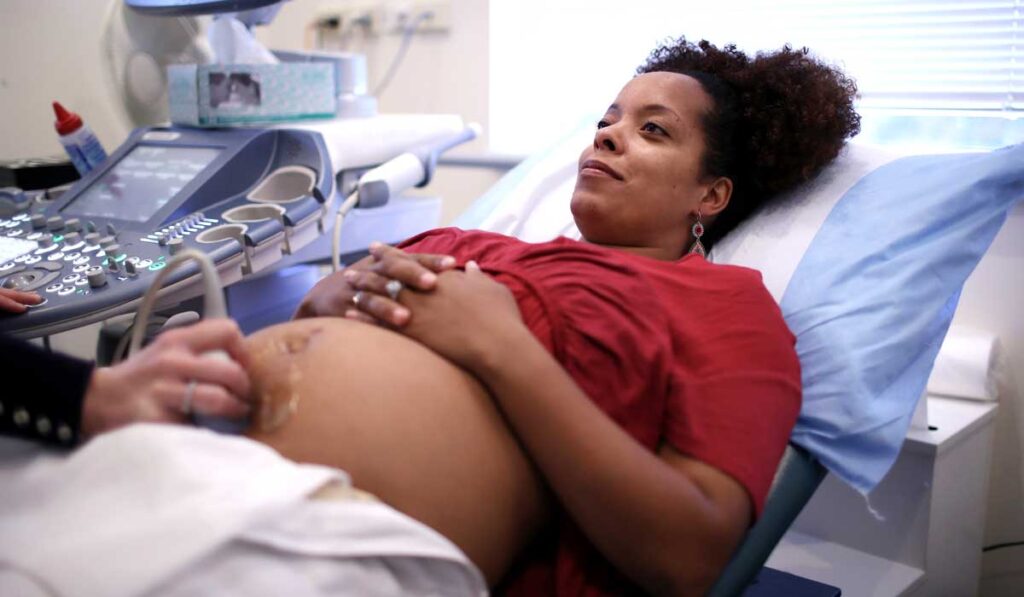A wide-ranging initiative at Vanderbilt University Medical Center, led by Etoi Garrison, M.D., a maternal-fetal medicine specialist, seeks to uncover and address racial/ethnic disparities in workforce, patient care and health outcomes in the Vanderbilt Department of Obstetrics and Gynecology.
Research suggests that black women have worse pregnancy outcomes compared with white women, even when they deliver at the same hospital and have no differences in insurance, education or medical history. Some differences in patient care may be associated with unconscious and unintentional preferences by clinicians for certain racial or ethnic groups over others.
“Many drivers can affect where a patient seeks care, how often they engage with the health care team and the quality of services provided,” Garrison said. “Ensuring that every woman has an equal opportunity for the best outcome in pregnancy is a multifactorial challenge that we are just beginning to fully understand.”
A Four-pronged Approach
In a 2019 review, Garrison and colleagues identified four overarching strategies to mitigate the impact of unconscious bias in obstetrics and gynecology: recognizing and addressing bias, standardizing hiring and evaluation processes, establishing a diverse and inclusive culture and measuring health outcomes. The team began by evaluating the existing culture in their department and offering a two-hour unconscious bias training module developed by Arie Nettles, Ph.D., director of the Vanderbilt Office of Inclusion and Health Equity.
“Unconscious bias can inadvertently affect the way in which faculty and trainees communicate with each other about the patients we serve, how we deliver care and how we communicate with patients,” Garrison said. “As a result, it can have a positive or negative influence on patient outcomes.”
Disseminating Training Expertise
Building on the success of the departmental training, the Vanderbilt collaborators received a grant award from the Tennessee Maternal Mortality Review and Prevention Committee to develop a “train the trainer” model to help other regional hospitals conduct unconscious bias training. For the initial phase of the program, they identified five faculty teams – three hospitals within Vanderbilt’s perinatal network and two outside the network.
“Even if you’re a rural hospital that doesn’t have a large African American or Hispanic population, there still may be other challenges in pregnancy that result in differential treatment: class, weight, disease type, substance abuse and others. Every time we have a workshop, we hear examples of bias that we really wouldn’t have thought of,” Garrison said.
Since January 2021, 11 workshops have been presented to over 220 faculty, nursing staff and trainees. “It is our hope that after these workshops are completed, we can help the hospitals develop educational opportunities for additional clinicians and staff.”
Patient Engagement Doubles
Garrison’s team is also studying how unconscious bias influences patient perinatal engagement. In a 12-week pilot program, Spanish-speaking patients were asked upon leaving their first obstetrics appointment whether they were enrolled in Vanderbilt’s patient portal, My Health at Vanderbilt.
“At the first OB visit, only about 20 percent of our Spanish-speaking patients were signed up, compared to 60-70 percent of English-speaking patients,” Garrison said. “That’s in 2021 during a pandemic, when electronic communication was really stressed with patients.”
With support from Vanderbilt, the team launched a pilot program to get more Spanish-speaking patients engaged with the portal. Patients received an informational handout at their first OB visit and were encouraged to set up an account. Several days later they received a follow-up call from an interpreter asking if they had enrolled and providing a number to call for support.
By the end of the pilot program, enrollment among Spanish-speaking patients had doubled to 39.8 percent. “The pilot was extremely helpful because it showed us that encouraging and coaching patients one-on-one really made a difference,” Garrison said.
Measuring Peripartum Outcomes
Beyond coaching providers and patients, Garrison is helping the Department of Obstetrics and Gynecology to develop a dashboard of process and outcome metrics, based on EHR data filtered by race, ethnicity and primary language. “We’re looking at the health outcomes within our department to determine if our numbers across race/ethnic groups are consistent with national benchmarks for primary C-section, operative vaginal delivery and post-delivery readmissions,” she explained.
The next step is to stratify patients by indication for readmission, insurance type, BMI, age, parity, risk status and social determinants of health. “I could give you a long list of health outcomes for which underrepresented minorities are at greater risk,” Garrison said. “What we really want to do is identify a few key outcomes we can affect.”





